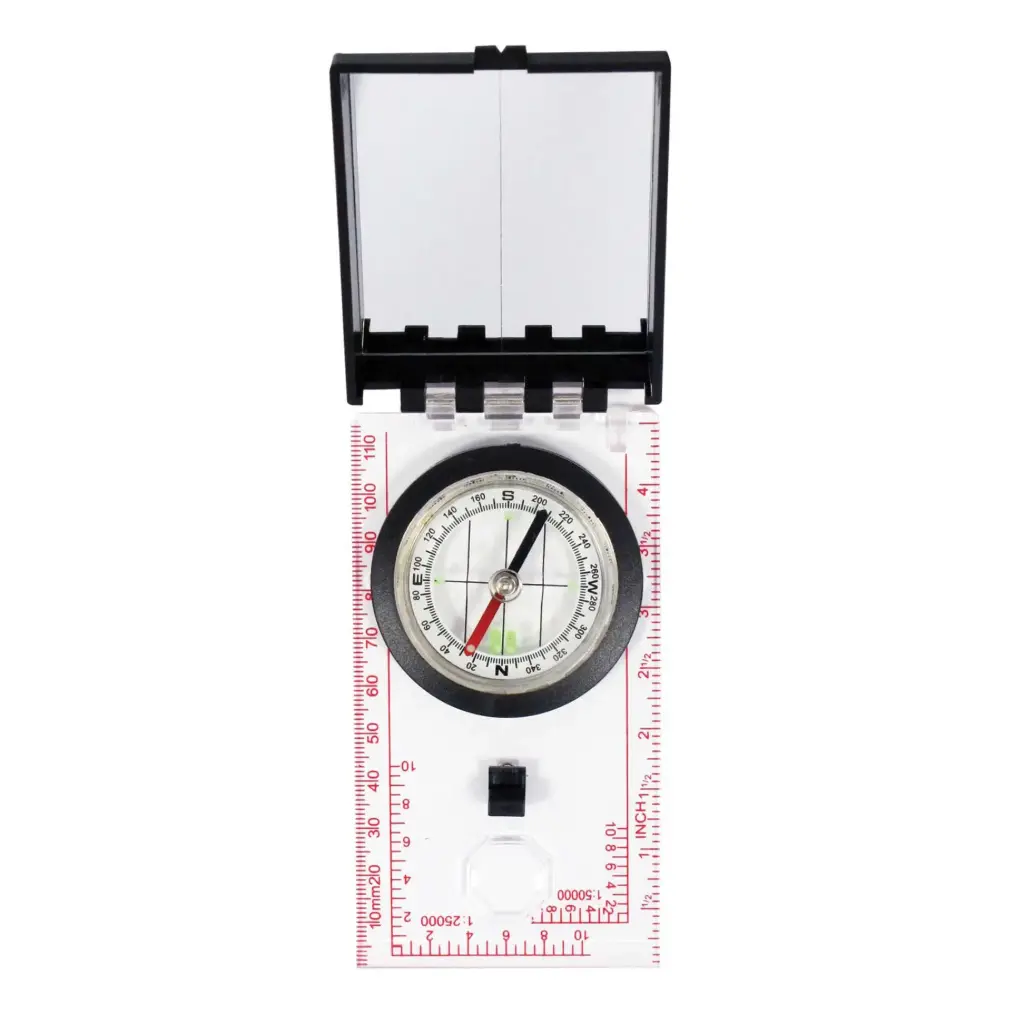MAP COMPASS
Baseplate Material: Typically transparent acrylic or plastic.
- Transparency: Essential for placing the compass directly on a map.
- Dimensions: Varies, but usually large enough for easy handling and map placement (e.g., 5-7 inches long).
- Rulers/Scales:
- Metric: Millimeters (mm), centimeters (cm).
- Imperial: Inches.
- Map Scales (Romer Scales): Specific scales like 1:25,000, 1:50,000, 1:24,000 (USGS), etc., for directly measuring distances on corresponding maps.
- Direction of Travel Arrow: A prominent arrow on the baseplate indicating the intended direction of movement.
Compass Housing (Bezel):
- Material: Durable plastic, sometimes with a grip for easy rotation.
- Graduations: Marked in degrees (0-360°), usually in 2° increments for precision. Some may have larger increments (e.g., 5°) for simpler models.
- Cardinal Points: Clearly marked N, S, E, W.
- Rotating Functionality: Must rotate smoothly and maintain its set position.
Magnetic Needle:
- Material: High-quality magnetized steel.
- Color-coding: Typically red for North, white for South.
- Damping Fluid: Liquid-filled capsule (e.g., mineral oil, white spirits) to stabilize the needle's movement and prevent excessive oscillation. This is crucial for quick and accurate readings.
- Pivot Point: Low-friction pivot (e.g., sapphire bearing) for free and accurate rotation.
Orienting Arrow/Lines:
- Orienting Arrow: An outline or arrow within the compass housing, designed to align with the North end of the magnetic needle when orienting to North.
- Orienting Lines (Meridian Lines): Parallel lines within the housing, used to align the compass with the North-South grid lines on a map.
Index Line: A fixed line on the baseplate that indicates the bearing reading from the rotating bezel.
